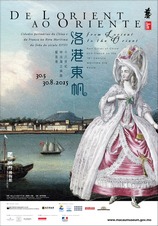30 May 2015 – 6 September 2015
http://www.kunsthalle-karlsruhe.de
Karoline Luise of Baden (1723–1783) shaped the art collection of the margraves of Baden more than any other before or since. In 2015 the Staatliche Kunsthalle Karlsruhe will be devoting a Great State Exhibition to this passionate art collector. The exhibition is due to run from 30 May to 6 September 2015 and will coincide with celebrations marking the 300th anniversary of the city of Karlsruhe.
The centrepiece of the show will be the presentation of Karoline Luise’s Mahlerey Cabinet, a collection that once boasted more than 200 paintings, most of which are still preserved in the Kunsthalle today. Her original collection included Dutch masterpieces of the 17th century and great works of French painting from the 18th century, among them canvases by Rembrandt Harmensz van Rijn, David Teniers, and Jean Siméon Chardin
http://www.kunsthalle-karlsruhe.de
Karoline Luise of Baden (1723–1783) shaped the art collection of the margraves of Baden more than any other before or since. In 2015 the Staatliche Kunsthalle Karlsruhe will be devoting a Great State Exhibition to this passionate art collector. The exhibition is due to run from 30 May to 6 September 2015 and will coincide with celebrations marking the 300th anniversary of the city of Karlsruhe.
The centrepiece of the show will be the presentation of Karoline Luise’s Mahlerey Cabinet, a collection that once boasted more than 200 paintings, most of which are still preserved in the Kunsthalle today. Her original collection included Dutch masterpieces of the 17th century and great works of French painting from the 18th century, among them canvases by Rembrandt Harmensz van Rijn, David Teniers, and Jean Siméon Chardin













